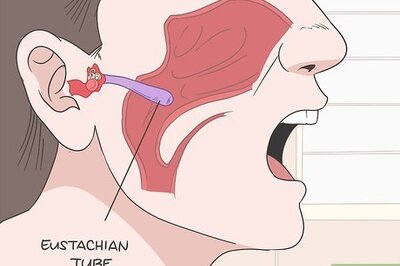
views
The theme for World Breastfeeding Week 2024, “Closing the Gap: Breastfeeding Support for All,” highlights the critical need for comprehensive support for new mothers navigating the postpartum journey. The initial weeks after childbirth involve not only learning to care for the newborn but also adapting to breastfeeding, which, despite its numerous benefits, can present significant challenges. Deanne Silvia Sybil Misquita, IBCLC – certified Lactation Counsellor, Fernandez Hospital takes us through it:
Benefits and Challenges of Breastfeeding
Exclusive breastfeeding for the first six months of life offers immense health benefits, yet many mothers encounter obstacles that can undermine their confidence and feeding goals. Research indicates that breastfeeding support should encompass identifying breastfeeding problems, reducing maternal stress, providing rest opportunities, and offering resources to prevent early weaning.
Importance of Proper Latch and Positioning
Many breastfeeding issues can be resolved with proper latch and positioning, which are essential for effective milk transfer. A good latch involves the baby opening its mouth wide and taking a mouthful of breast tissue, remaining attached throughout the feed. A comfortable position for the mother and baby includes supporting the baby well, aligning the baby’s tummy to the mothers, and ensuring the baby’s neck is not twisted, with the nose to nipple.
Effective Breastfeeding Positions
In addition to common breastfeeding positions like cradle hold, cross-cradle, and football hold, the reclined feeding position mimics natural feeding and aids the baby’s reflexes in latching comfortably. Key tips for all mothers include engaging in plenty of skin-to-skin contact with the baby, breastfeeding early and frequently, recognising and responding to feeding cues, and providing support and care to the mother.
Common Breastfeeding Issues and Solutions
Latching Pain
Latching pain is common initially but should subside as the baby takes more breast tissue into the mouth. Topical applications like hind milk, virgin coconut oil, or nipple moisturisers can be helpful.
Cracked Nipples
Improper latching can also cause cracked and sore nipples. Ensuring a deep latch and breaking suction before de-latching are important techniques. Cracked nipples often need time to heal, and maintaining proper latch is essential to prevent recurrence.
Engorgement
Engorgement, characterised by heavy, swollen, and painful breasts, can be managed by frequent feeding, breast massage, and alternating warm and cold compresses to alleviate heaviness and pain.
Clogged Ducts
Clogged ducts, or plugged ducts, appear as nipple blebs with associated breast pain. Addressing this with improved latch and avoiding pressure on the breast can help. Massaging the affected area before feeding can also promote drainage.
Thrush
Thrush, a fungal infection, can cause breast pain without a latching issue. It presents with burning and stabbing pain in the breast, pink and shiny nipples, and white patches in the baby’s mouth. Treatment for both mother and baby is essential, along with sterilising feeding equipment and air-drying the breasts after feeds.
Low Milk Supply
Low milk supply, often due to improper latch and insufficient drainage, requires careful evaluation. Reliable signs include the baby’s insufficient weight gain and reduced urine output. Frequent breastfeeding, ensuring a proper latch, and avoiding formula supplements unless medically necessary will help increase milk supply.
Inverted Nipples
Inverted nipples necessitate immediate breastfeeding initiation and learning to hand express, along with gentle nipple pulling methods before feeds.
Support and Encouragement
Breastfeeding may not always be as effortless as depicted in videos, and it is common to encounter challenges along the way. Surrounding yourself with a supportive healthcare team, family, friends, and loved ones can make a significant difference.
A multidisciplinary treatment team working in close collaboration can reinforce treatment approaches, promote trust and safety, and assist patients in moving forward with change.


















Comments
0 comment